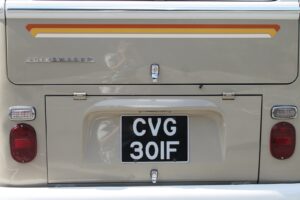Odds and Evens
Just like the UK Parliament I decided to take the Summer off from my side job of writing this blog, which turned into taking the Autumn off too, purely by accident.
I attended the AQ News national conference in Lords last week which has empowered me into re-starting these monthly blogs. This, alongside bonfire night, gives those of us who work in air quality monitoring and improvement lots of content to mull over.
However, to start with I wanted to talk about Delhi who will be implementing their tried and tested odd-even number plate scheme in response to their seasonal pollution spike. I have always liked this approach which has been used in Paris, Beijing and in some of the big cities in South and Central America.
For those of you who are not familiar with this approach it is where a city implements what can only be described as one of the best traffic reduction schemes out there. It essentially halves the traffic on the roads every day by only allowing cars with odd registration numbers to drive on odd days of the month and those with even registration numbers to drive on even days of the month.
I like this approach for a number of reasons. The first is that it doesn’t need any complicated infrastructure to implement. No changes need to be made to any vehicles or the road network, which makes it a solution that can be implemented fairly quickly and at low cost.
It can be a very simple solution. It mostly applies to all vehicles; however, some schemes have certain allowances to shared vehicles. And as such it is very easy to be understood by the driving public. The plethora of traffic schemes we have in the UK, clean air zones, low emission zones, low traffic neighbourhood etc present a very complex backdrop to achieving a wide range of environment and social outcomes.
The messaging behind an odd and even scheme is simple. I have read that the overall level of support for these interventions is high, much higher than some of the schemes mentioned above implemented in the UK.
It is also a solution that can be turned on and off relatively quickly. Given all of those elements above a city’s decision to begin or end an odd-even scheme can be made at pace and in response to either real time or forecast pollution events.
And finally, it is an effective solution. The published figures from some of the cities above have shown to remove millions of vehicles from their roads, and the subsequent reduction in gas and particle pollution, as well as improvement in local health outcomes.
I have read, and written, many air quality and transport policy documents in my career and have not yet come across any authority in the UK looking at this approach. I would be more than happy to be corrected and would love to see this type of dynamic solution piloted in some of our urban areas.

















